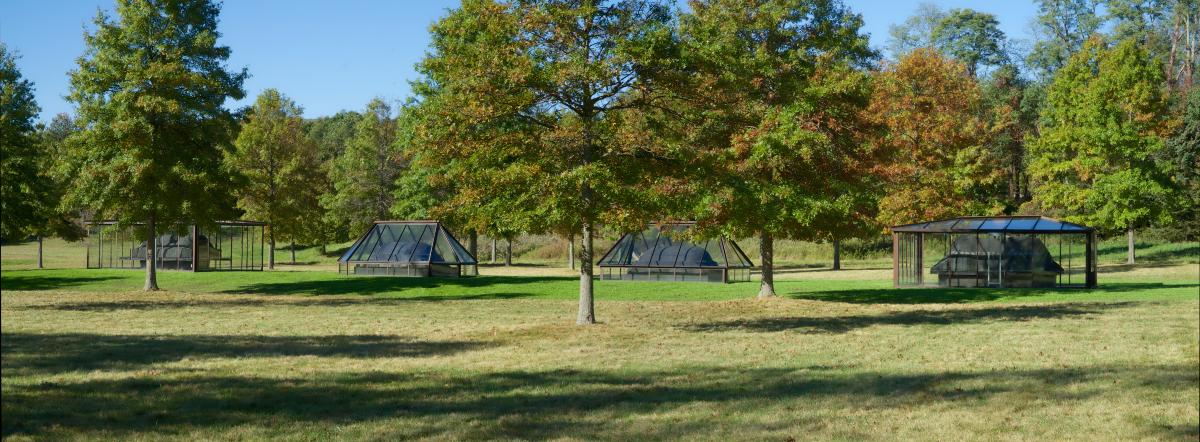On view
Polish, 1930–2017
Sarcophagi in Glass Houses, 1989
Wood, glass, and iron
8 ft. 6 1/2 in. x 17 ft. 2 1/2 in. x 143 ft. 3 in. (260.4 cm x 524.5 cm x 43.7 m)
Gift of the Artist; Additional support provided by Ernst and Patricia Ohnell, The Ralph E. Ogden Foundation, Cynthia Hazen Polsky, The Horace W. Goldsmith Foundation, Jim and Mary Ottaway, The Margaret T. Morris Foundation, the Joseph H. Hazen Foundation Purchase Fund, Vera G. List, and Sherry and Joel Mallin
©Marta Magdalena Abakanowicz-Kosmowska and Jan Kosmowski Foundation, courtesy Marlborough Gallery, New York
Photo by Jerry L. Thompson
The central elements of this sculpture, the sarcophagi, were originally parts from models used for casting engines by arms manufacturer Schneider-Creusot, in Le Creusot, near Lyon, in the nineteenth and twentieth centuries. In 1982 Magdalena Abakanowicz was invited by the French cultural ministry to visit the industrial district of Le Creusot. There, she found a selection of monumental casting models—engines for ships, sub-marines, canons, turbines, and other machinery. Cutting away parts to focus on the essential form of each model, Abakanowicz revealed inner swelling shapes that suggested human bellies. She saw an analogy between the energy generated by the turbine engine and that created by the belly. The oak forms were installed on new bases and enclosed in glass and steel structures, both to protect them and to contain the potential energy they represented.
Abakanowicz, born to aristocratic parents on a family estate near Warsaw, grew up a lonely, introspective child. The horrors and trauma of World War II she experienced as an adolescent and later restrictions under the Communist regime indelibly stamped the character of her art. Abakanowicz’s mysterious sculptures allude to violence, loss, decay, and mourning.
Abakanowicz, born to aristocratic parents on a family estate near Warsaw, grew up a lonely, introspective child. The horrors and trauma of World War II she experienced as an adolescent and later restrictions under the Communist regime indelibly stamped the character of her art. Abakanowicz’s mysterious sculptures allude to violence, loss, decay, and mourning.

